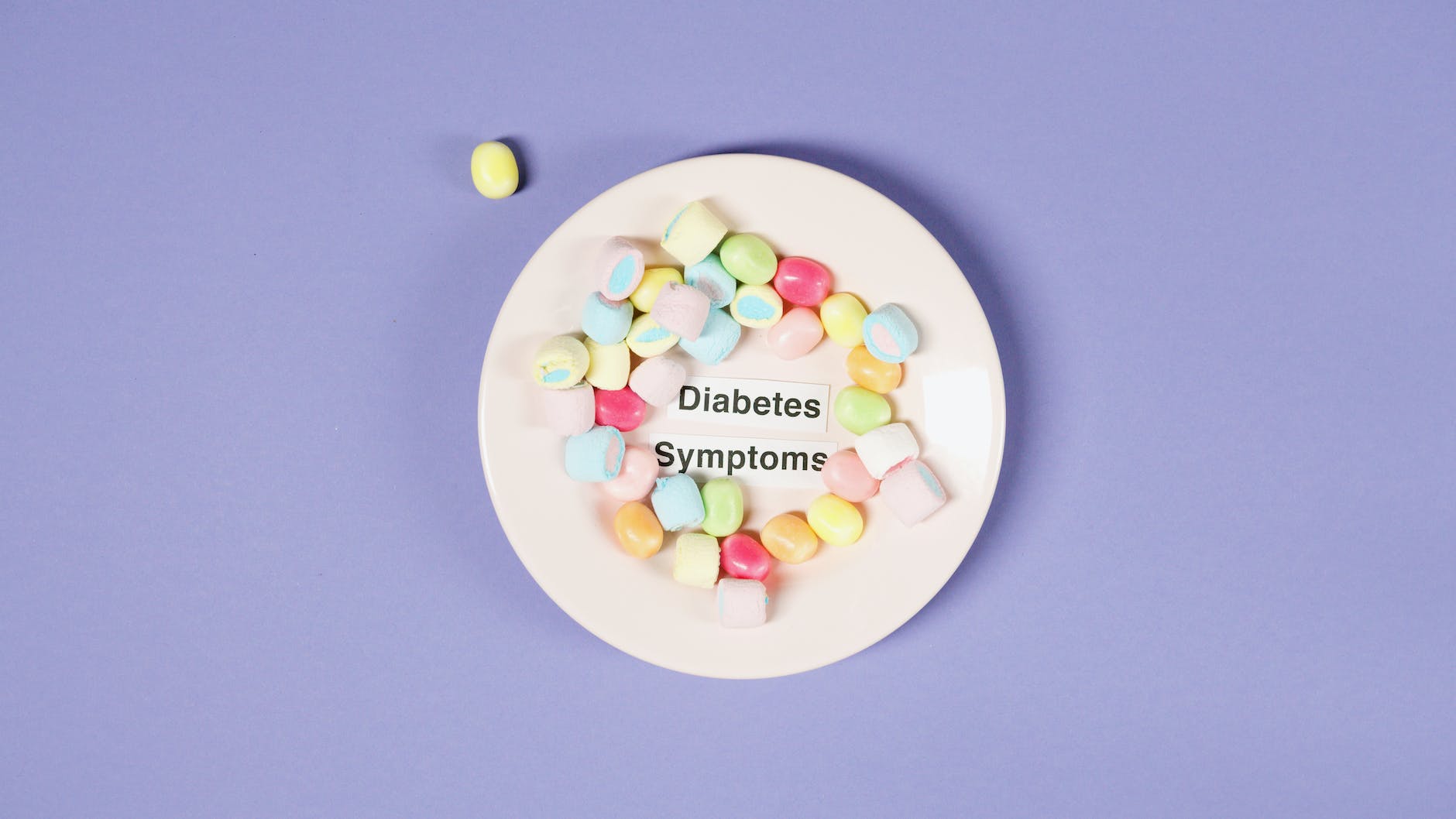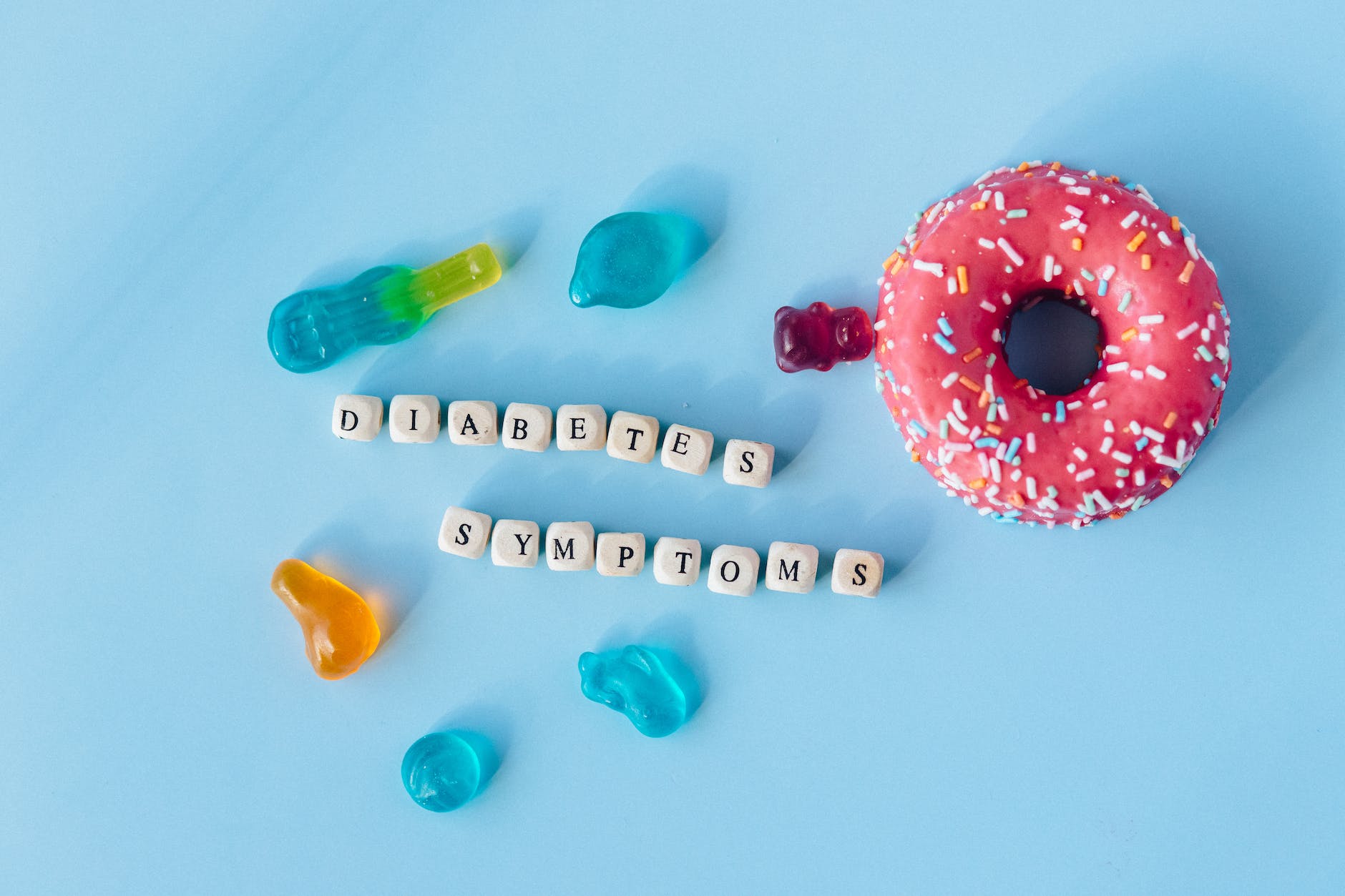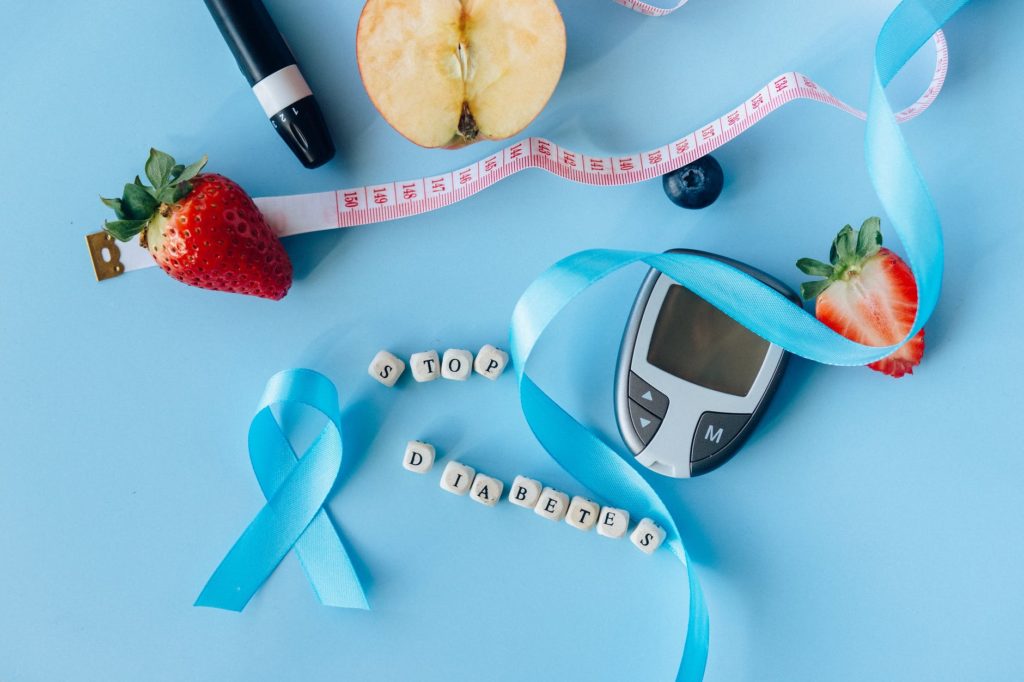Diabetes Symptoms (10): Recognizing the Warning Signs


- Diabetes Symptoms (10): Recognizing the Warning Signs - A Comprehensive Guide for Americans
- Understanding Type 1 Diabetes Symptoms - Diabetes Symptoms (10): Recognizing the Warning Signs
- Recognizing Type 2 Diabetes Symptoms - Diabetes Symptoms (10): Recognizing the Warning Signs
- Exploring Gestational Diabetes Symptoms - Diabetes Symptoms (10): Recognizing the Warning Signs
- Common Symptoms of High Blood Sugar Levels - Diabetes Symptoms (10): Recognizing the Warning Signs
- Identifying Skin and Yeast Infections as Warning Signs - Diabetes Symptoms (10): Recognizing the Warning Signs
- Unexplained Weight Loss and Diabetes - Diabetes Symptoms (10): Recognizing the Warning Signs
- Blurry Vision: A Sign of Uncontrolled Diabetes - Diabetes Symptoms (10): Recognizing the Warning Signs
- Numbness and Tingling in Hands and Feet: Peripheral Neuropathy - Diabetes Symptoms (10): Recognizing the Warning Signs
- Understanding Diabetes and Its Complications - Diabetes Symptoms (10): Recognizing the Warning Signs
Diabetes Symptoms (10): Recognizing the Warning Signs - A Comprehensive Guide for Americans
10 Diabetes Symptoms can be subtle or severe, but recognizing these warning signs is crucial. Type 1 symptoms differ from type 2, while gestational diabetes also has its unique 10 Diabetes Symptoms. High blood sugar levels, skin and yeast infections, unexplained weight loss, blurry vision, and numbness and tingling in hands and feet are all part of the 10 Diabetes Symptoms to watch for. Always remember the increased risk for chronic kidney disease when discussing 10 Diabetes Symptoms. Stay informed to protect your health.
Understanding Type 1 Diabetes Symptoms - Diabetes Symptoms (10): Recognizing the Warning Signs


Type 1 diabetes, also known as juvenile diabetes or insulin-dependent diabetes, is characterized by the body's inability to produce insulin. This type often develops in childhood or adolescence. Recognizing the 10 Diabetes Symptoms is crucial for early detection and effective management.
Here are some key symptoms to be aware of within the 10 Diabetes Symptoms list:
- Excessive thirst: If you find yourself constantly reaching for a drink and feeling thirsty even after consuming fluids, it could be a sign of type 1 diabetes.
- Frequent urination: The urge to urinate frequently, especially during the night, can be a symptom of type 1 diabetes. This occurs because the body is trying to eliminate excess sugar.
- Increased hunger: People with type 1 diabetes may experience persistent hunger, even after eating a meal. This is due to the body's inability to properly utilize glucose for energy.
- Unexplained weight loss: Despite increased hunger and food intake, individuals with type 1 diabetes may experience unintentional weight loss. This occurs because the body is breaking down its own fat and muscle tissues for energy in the absence of insulin.
- Fatigue and weakness: Feeling tired and having low energy levels can be symptoms of type 1 diabetes. Without adequate insulin, glucose cannot enter the cells to produce energy.
- Blurred vision: High blood sugar levels can cause changes in the shape of the lens in the eye, leading to blurred vision. If you notice sudden changes in your vision, it's important to get it checked by a healthcare professional.
- Frequent infections: Type 1 diabetes weakens the immune system, making individuals more susceptible to infections. You may experience recurrent infections, particularly in the skin, gums, or urinary tract.
If you or your loved ones experience any of these symptoms, it's important to seek medical attention promptly. An early diagnosis of type 1 diabetes can help prevent complications and ensure proper management through insulin therapy and lifestyle modifications.
Recognizing Type 2 Diabetes Symptoms - Diabetes Symptoms (10): Recognizing the Warning Signs


Type 2 diabetes is a prevalent condition that affects many Americans. Recognizing the 10 Diabetes Symptoms is essential for early detection and management of the disease.
Frequent urination:
Individuals with type 2 diabetes often experience an increased need to urinate. This happens because excess sugar in the bloodstream pulls fluid from the tissues, leading to more frequent trips to the bathroom.
Constant thirst:
Feeling constantly thirsty is another warning sign of type 2 diabetes. High blood sugar levels can cause dehydration, leaving you feeling parched even after drinking fluids.
Increased appetite:
Despite eating more, individuals with type 2 diabetes may experience unexplained weight loss. This occurs as the body is not able to effectively utilize glucose for energy, leading to a constant feeling of hunger.
Fatigue:
Feeling tired and low on energy can be a symptom of type 2 diabetes. High blood sugar levels can cause fatigue and a lack of motivation, making daily activities more challenging to complete.
Slow healing of wounds:
If you notice that cuts or sores are taking longer to heal than usual, it could be a sign of type 2 diabetes. Poor circulation and high blood sugar levels can impair the body's ability to heal properly.
Blurred vision:
High blood sugar levels can affect the lenses of the eyes, resulting in blurred vision. If you experience sudden changes in your ability to see clearly, it is important to consult a healthcare professional.
Tingling or numbness in extremities:
Peripheral neuropathy is a common complication of type 2 diabetes. It can lead to tingling, numbness, or a loss of sensation in the hands and feet.
Frequent infections:
Type 2 diabetes weakens the immune system, making individuals more prone to infections. This includes recurrent yeast infections, urinary tract infections, and skin infections.
Darkened skin patches:
Dark, velvety patches of skin, known as acanthosis nigricans, can appear in individuals with insulin resistance or type 2 diabetes. These patches usually develop in areas with folds or creases, such as the neck, armpits, or groin.
High blood pressure:
While not a direct symptom of type 2 diabetes, hypertension is common in individuals with the condition. It is important to monitor blood pressure regularly and seek appropriate management.
If you are experiencing any of these symptoms, it is crucial to consult a healthcare professional for an accurate diagnosis and appropriate treatment. Early detection and proper management of type 2 diabetes can help prevent complications and improve overall health and well-being.
Exploring Gestational Diabetes Symptoms - Diabetes Symptoms (10): Recognizing the Warning Signs


Gestational diabetes is a type of diabetes that occurs during pregnancy. Within the broader list of 10 Diabetes Symptoms, it is crucial to recognize the unique symptoms of gestational diabetes and seek medical attention for proper management.
- Frequent urination: If you find yourself needing to urinate more often than usual, it could be a sign of gestational diabetes. The increased blood sugar levels can cause excessive thirst and subsequent frequent urination.
- Increased thirst: Feeling constantly thirsty, even after drinking an adequate amount of fluids, can be an indication of gestational diabetes. High blood sugar levels lead to dehydration and increased thirst.
- Extreme fatigue: Feeling excessively tired and fatigued throughout the day can be a symptom of gestational diabetes. The body's inability to properly utilize glucose can result in low energy levels.
- Unexplained weight loss: While weight gain is common during pregnancy, unexplained weight loss or difficulty in maintaining weight can be a warning sign of gestational diabetes.
- Nausea and vomiting: Experiencing persistent nausea or frequent vomiting can be linked to gestational diabetes. Fluctuations in blood sugar levels can lead to these symptoms.
- Frequent infections: Pregnant women with gestational diabetes may be more prone to infections, particularly urinary tract and vaginal infections. High blood sugar levels create a favorable environment for bacterial growth.
If you experience any of these symptoms during pregnancy, it is essential to consult with your healthcare provider. Early detection and proper management of gestational diabetes can reduce the risk of complications for both the mother and baby.
Common Symptoms of High Blood Sugar Levels - Diabetes Symptoms (10): Recognizing the Warning Signs


High blood sugar levels, also known as hyperglycemia, can cause a range of symptoms, some of which might overlap with the 10 Diabetes Symptoms. Recognizing these signs is imperative to seek timely medical attention and prevent further complications.
- Frequent Urination: Increased need to urinate throughout the day and waking up frequently at night to use the bathroom.
- Excessive Thirst: Feeling constantly thirsty, despite drinking an adequate amount of fluids.
- Increased Hunger: Persistent feelings of hunger, even after eating a satisfying meal.
- Unexplained Weight Loss: Losing weight without making any conscious effort or changes in diet and exercise routine.
- Extreme Fatigue: Feeling constantly tired and lacking energy, even after getting enough rest.
- Blurred Vision: Experiencing difficulties in focusing and having a hazy vision.
- Slow Healing: Wounds, cuts, and sores taking longer than usual to heal.
If you notice these symptoms persisting or worsening, it is important to reach out to a healthcare professional for proper diagnosis and management of high blood sugar levels. Early intervention and proper treatment can help prevent complications associated with diabetes.
Identifying Skin and Yeast Infections as Warning Signs - Diabetes Symptoms (10): Recognizing the Warning Signs


Skin and yeast infections can be warning signs of diabetes. When considering the broader scope of 10 Diabetes Symptoms, these infections can sometimes be overlooked. However, consistently high blood sugar levels create environments conducive to fungal growth, leading to infections.
Common skin infections related to diabetes include:
- Yeast infections: These can occur in warm, moist areas of the body, such as the groin, armpits, or between the toes. Symptoms may include redness, itching, and a rash-like appearance.
- Boils: These painful, pus-filled bumps may be a sign of a bacterial infection stemming from high blood sugar levels.
- Carbuncles: Similar to boils, but larger and more serious, carbuncles are clusters of infected hair follicles that form a painful lump.
- Fungal nail infections: Thickened, discolored nails that are prone to cracking or breaking can indicate a fungal infection.
It is important to recognize these skin infections early on and seek prompt treatment. Poorly controlled diabetes can weaken the immune system, making it harder for the body to fight off infections.
If you notice any persistent skin problems or suspect a yeast or fungal infection, consult with a healthcare professional. They can provide an accurate diagnosis and recommend appropriate treatment options, such as antifungal medication or ointments.
Unexplained Weight Loss and Diabetes - Diabetes Symptoms (10): Recognizing the Warning Signs


Unexplained weight loss can be a concerning sign among the 10 Diabetes Symptoms, especially in type 1 diabetes. When your body doesn't produce enough insulin, it can't convert glucose into energy, leading to the breakdown of fat and muscle for fuel. This can result in a noticeable drop in weight, even if you haven't made any changes to your diet or exercise routine.
If you are experiencing significant weight loss without any apparent cause, it is important to consult with a healthcare professional. They can assess your symptoms, perform necessary tests, and determine if diabetes or another underlying condition may be the cause.
It is worth noting that unexplained weight loss can also be associated with type 2 diabetes, although it is less common. In type 2 diabetes, insulin resistance can lead to inefficient glucose utilization, causing the body to break down fat and muscle for energy. This can result in unintentional weight loss as well.
Remember, unexplained weight loss should never be ignored or attributed solely to aging or stress. If you are concerned about sudden or significant weight loss, contact your healthcare provider for an evaluation and appropriate management.
Blurry Vision: A Sign of Uncontrolled Diabetes - Diabetes Symptoms (10): Recognizing the Warning Signs


Within the framework of 10 Diabetes Symptoms, blurry vision is a commonly reported symptom associated with uncontrolled diabetes. When your blood sugar levels are consistently high, it can affect the fluid balance in your body, including the lenses of your eyes. This fluid imbalance can cause the lenses to swell, resulting in blurry or distorted vision.
If you notice sudden changes in your vision, such as difficulty focusing, double vision, or hazy images, it's important to get your blood sugar levels checked. Ignoring blurry vision can lead to more serious eye problems, such as diabetic retinopathy, cataracts, or even blindness.
Managing your diabetes through proper medication, healthy eating, regular exercise, and regular check-ups can help control your blood sugar levels and reduce the risk of complications. Additionally, regular eye exams are essential for detecting any early signs of eye problems and preventing further damage.
Remember, blurry vision is not always a sign of diabetes, but it should be taken seriously, especially if you have other diabetes symptoms. Don't delay seeking medical attention if you experience any changes in your vision, as early intervention can make a significant difference in preserving your eye health.
Numbness and Tingling in Hands and Feet: Peripheral Neuropathy - Diabetes Symptoms (10): Recognizing the Warning Signs


Peripheral neuropathy, with its characteristic numbness and tingling in extremities, stands out as one of the 10 Diabetes Symptoms that many people experience. One of the symptoms associated with peripheral neuropathy is numbness and tingling sensation in these areas.
When you experience numbness and tingling in your hands and feet, it may be an indication of nerve damage caused by high blood sugar levels over time. The excess glucose in your bloodstream can affect the small blood vessels that nourish the nerves, leading to their dysfunction and the resulting numbness and tingling sensation.
This condition can be quite uncomfortable and can disrupt your daily activities. It is important to monitor these symptoms closely, as they can progress and result in pain, muscle weakness, and loss of coordination in the affected areas.
To manage peripheral neuropathy and alleviate the numbness and tingling sensation, it is essential to control your blood sugar levels and keep them within the target range. This can be achieved through proper diabetes management, including regular monitoring, following a balanced and nutritious diet, engaging in regular physical activity, and taking prescribed medications as directed by your healthcare provider.
Additionally, certain lifestyle modifications can also help improve the symptoms of peripheral neuropathy. These may include quitting smoking, reducing alcohol consumption, maintaining a healthy weight, and practicing good foot care habits to minimize the risk of foot ulcers and infections.
If you are experiencing numbness and tingling in your hands and feet, it is crucial to consult with your healthcare provider. They can assess your condition, provide appropriate guidance, and recommend specific treatment options to address your symptoms and prevent further complications.
Understanding Diabetes and Its Complications - Diabetes Symptoms (10): Recognizing the Warning Signs


Diabetes is a complex chronic condition associated with "10 Diabetes Symptoms." It can have severe consequences if not properly managed. One of the potential complications linked with diabetes is an increased risk of developing chronic kidney disease (CKD) – an ailment that those aware of the "10 Diabetes Symptoms" should be wary of.
What is Chronic Kidney Disease (CKD)?
CKD, which is a concern for those knowledgeable about "10 Diabetes Symptoms", refers to the loss of kidney function over time. It can progress to end-stage renal disease, requiring either dialysis or a kidney transplant.
Why Diabetics Are At Risk
Individuals who are aware of the "10 Diabetes Symptoms" and have diabetes are more susceptible to developing CKD. This susceptibility is due to the long-term effects of high blood sugar levels on the kidneys.
For those familiar with "10 Diabetes Symptoms", it's crucial to note that diabetes-related kidney disease progresses slowly. It may not show any noticeable symptoms in the early stages. However, there are signs, aside from the "10 Diabetes Symptoms", that individuals with diabetes should look out for.
Seeking Medical Attention for Suspected CKD
If you've acknowledged the "10 Diabetes Symptoms" and experience any symptoms related to CKD, seek medical attention immediately. A healthcare provider can evaluate your kidney function via blood and urine tests, considering the "10 Diabetes Symptoms".
Preventative Measures for CKD in Diabetics
Understanding the "10 Diabetes Symptoms" is one step. To further reduce the risk of CKD, individuals with diabetes should maintain excellent blood sugar control by adhering to their prescribed treatment plan. Lifestyle factors, combined with an understanding of the "10 Diabetes Symptoms", also play a vital role in kidney health protection.
The Importance of Regular Monitoring
Regular check-ups with your healthcare team are essential to monitor kidney function and adjust treatment strategies as needed.
By dividing the content with these subtitles, readers can easily navigate through the information and understand the core messages more clearly.
Our best recommendation in the end is that you get the best advice from a group of professionals who have been willing to revolutionize your diabetes situation and give you the opportunity to radically improve your health.
Visit at this time the link that keeps clicking on it


